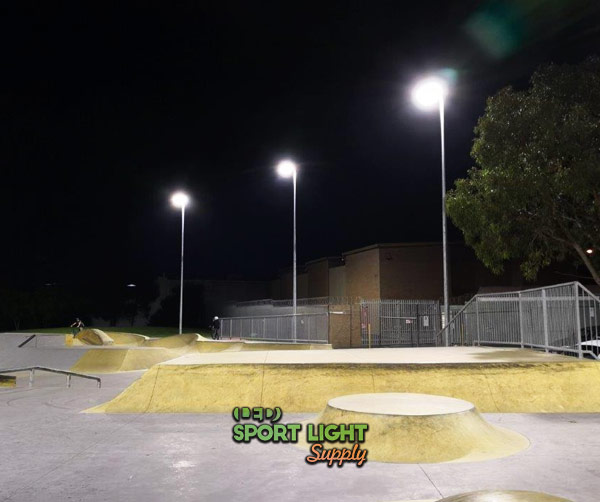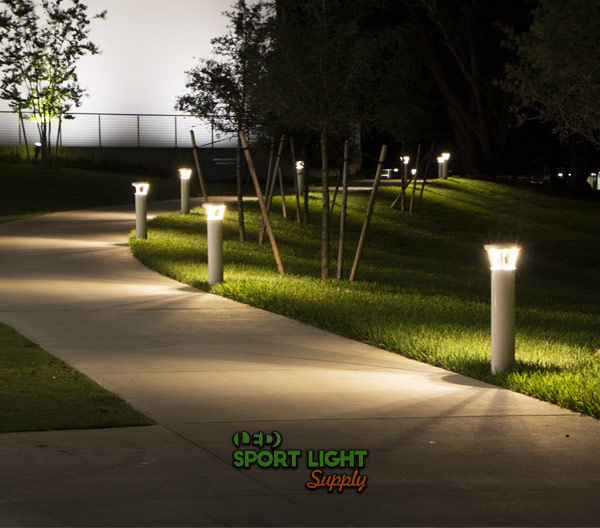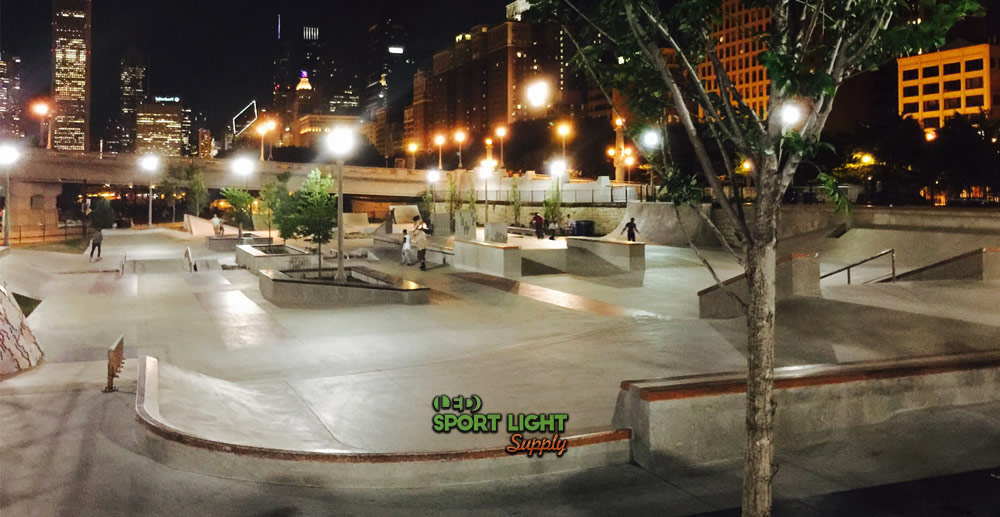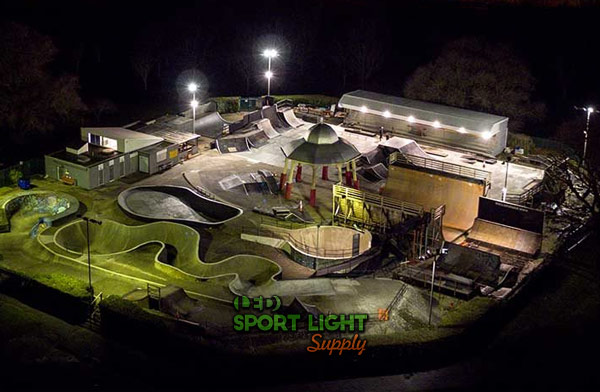Since the implementation of the U.S. Lighting Energy Policy, new lighting solutions strive to adhere to U.S. lighting standards. Solar lights offer automatic shutoff and lighting control, and they can include occupancy sensors to enhance efficiency. As such, they are an excellent choice for skate parks and public parks.
However, while solar lighting minimizes light pollution, its application may be limited in certain locations. Solar lights need direct sunlight to generate and store electricity, which might not be feasible in all areas. Additionally, the LED fixtures in solar lights may not produce sufficient lumens to meet the lux levels required for activities like professional skateboarding.
In most cases, solar lights can be effectively used in skate parks and public parks. Nevertheless, for optimal lighting conditions, reliance on a traditional electrical grid system is often necessary. That said, ongoing advancements in LED technology have already made solar lighting more affordable and are likely to lead to new and improved lighting solutions in the future.
Table of Contents
ToggleTypes of Outdoor Solar Lights
In a public park, you might encounter several types of outdoor solar lights. Each type has its own characteristics and applications, making them suitable for different areas, including skate parks.

Solar Flood Lights and Spot Lights
Solar flood lights and spot lights are designed to offer broad and narrow beam angles, similar to their traditional counterparts. The primary difference lies in their lumen output. Most solar fixtures use a 100-150 watt LED lamp instead of the standard 500-watt version. These lights are ideal for providing secondary illumination in areas lacking energy cables or light poles. They can be installed in various locations, provided they are not obstructed by other light sources, as this could prevent them from functioning properly.

Solar Pathway Lights
Solar pathway lights are short post lights that illuminate pathways at night. Their performance is generally limited to a small radius. These lights typically feature built-in sensors that activate them as the sun sets. While they may not be suitable for high-activity areas like full pipes or volcanoes, they can effectively light up mini-ramps, pools, or stairs in a skate park.
Decorative Solar Lights
Today’s market offers a wide array of decorative solar lights, ranging from stakes to steel flower designs. These fixtures come in various shapes and can add aesthetic appeal to a kids’ playground or a vertical transition in a skate park. While their lumen output may be minimal, they provide pleasing ambient light and contribute to the overall visual appeal of the area.
Why Invest in a Solar LED Lighting System?

In recent decades, solar lighting technology has advanced significantly. Modern photovoltaic modules can now last up to 45 years, and improved designs have reduced maintenance needs to a minimum. Typically, the only maintenance required is occasional cleaning of the solar cells to remove dust or dirt.
Solar lights offer a secure, dimmable, and sustainable lighting solution that is both economical and environmentally friendly. In a public park, this translates to enhanced security and minimal impact on the ecosystem.
Advancements in charge controllers, which manage battery storage, have extended the lifespan of solar lighting systems. These controllers ensure that energy stored during the day is distributed efficiently to all connected LED fixtures. In a skate park, this means achieving optimal lighting to meet the minimum lux requirements for recreational use and local competitions.
A solar lighting system provides complete control over each LED luminaire. Additionally, you might be eligible for financial incentives for installing solar lights in your area. Expert contractors can assist you throughout the process and help navigate any stringent guidelines effectively.
Current Limitations of Solar-Powered Light Systems
Despite improvements in solar lighting technology, several limitations can affect the feasibility of using solar LED lights extensively. One key factor is the need for each photovoltaic panel to receive at least eight hours of direct sunlight per day. Without adequate control circuitry for grid-free lighting, the placement of solar fixtures becomes critical.
The intensity of light provided by solar fixtures alone may not be sufficient, especially in a large skate park where safety is a priority. For example, a skate park covering up to 10,000 square feet (930 square meters) requires approximately 223,200 lumens, calculated using the following formula:
Area × Lux Requirement (200 lux for recreational use) × Light Loss Factor (1.2)
For smaller skate parks, less than 2,500 square feet (232 square meters), solar lights may be adequate. However, as the size and number of ramps increase, traditional high-mast lighting might offer better coverage. In such cases, solar-powered fixtures can still serve as secondary or security lighting solutions.
Recommendations for Optimal Lighting Conditions

Contact a Professional Lighting Designer
When integrating solar lighting into your skate park, hiring a professional lighting designer is crucial. A skilled designer can ensure that all lighting requirements and broadcasting standards are met. They will conduct a photometric analysis to guarantee ideal lighting uniformity throughout the park.
Additionally, request detailed specifications from your contractor or manufacturer. Verify the reliability of the product specifications by obtaining samples and using a lux meter or a light meter app for testing. This step ensures that the chosen lighting solution meets your park’s needs effectively.
Review Your State’s Solar Access Laws or Solar Easement Statutes
Installing an outdoor solar lighting system can be complex, particularly in areas with limited space or specific regulations. Understanding your solar access rights is essential.
Some states have no specific solar access laws, while others require you to register your solar system with local authorities. If you’re installing independent solar fixtures on existing light poles, you may encounter fewer issues. However, local landscape ordinances might require adjustments to your project or impose compensation costs. Consulting with a professional lighting designer can help navigate these regulations and ensure a smooth installation process.
Conclusion
Integrating solar LED lighting into skate parks and public spaces offers significant benefits, including sustainability, reduced maintenance, and improved security. However, it’s essential to address potential limitations by consulting with a professional lighting designer and understanding local regulations. By carefully planning and considering these factors, you can achieve optimal lighting conditions that enhance both functionality and aesthetics.
